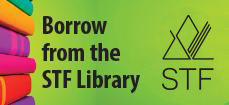Explore the properties of chemical reactions, including the role of energy changes, and applications of acids and bases.
| (a) |
Create a representation about the prevalence of chemistry in our lives. (A, S) |
| (b) |
Research the ways in which people, including First Nations and Métis, from various times and cultures have applied their understanding of the transformation of materials to produce new substances. (STSE) |
| (c) |
Observe and describe a variety of chemical reactions, including synthesis, decomposition, combustion, single replacement and double replacement. (S, K) |
| (d) |
Demonstrate knowledge of Workplace Hazardous Materials Information System (WHMIS 2015) standards by selecting and applying proper techniques for handling and disposing of lab materials and interpreting Safety Data Sheets (SDSs). (K, STSE, A) |
| (e) |
Explain why it can be difficult to classify changes as physical or chemical, including reference to the reversibility of the reaction. (K, A) |
| (f) |
Differentiate between reactants and products in chemical reactions. (K) |
| (g) |
Investigate the properties of endothermic and exothermic chemical reactions, including identifying where or how energy is absorbed or released in the reaction and identifying potential benefits and consequences of the reaction. (K, S) |
| (h) |
Research practical examples of chemical reactions involving acids and bases, including neutralization reactions such as those involved in chemical spills, soda-acid fire extinguishers and antacids. (S, STSE) |
| (i) |
Provide examples of the importance of pH measurements in areas such as biology, chemistry, food science, environmental science and water treatment. (K, STSE) |
| (j) |
Research the operation of technologies designed to monitor and manage pH in various applications such as swimming pools, consumer products, agriculture and horticulture. (K, S, STSE) |
















